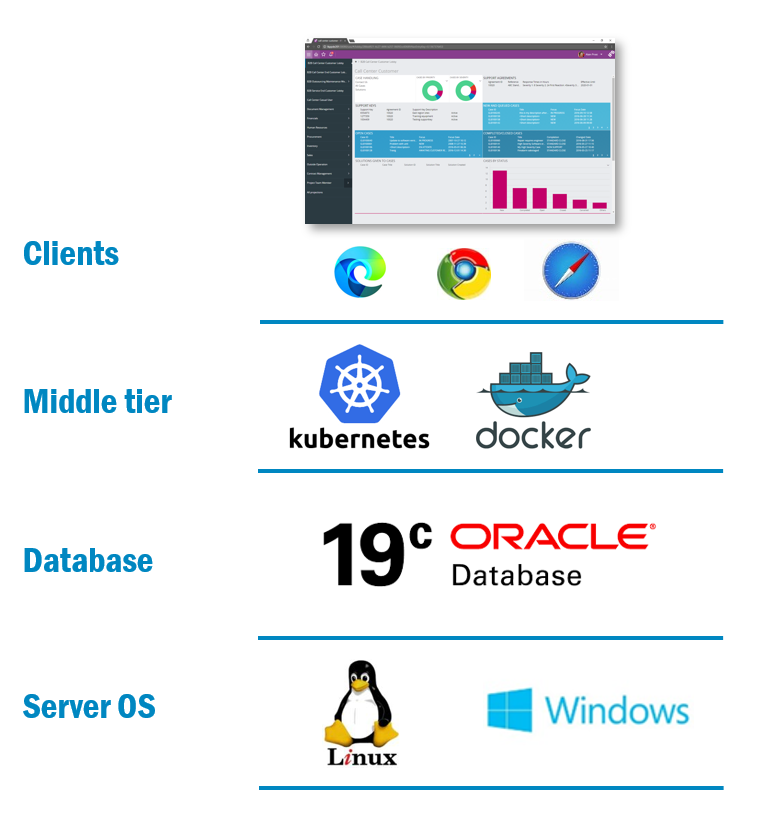Deployment and platforms¶
IFS provides two operating models:
- Cloud: IFS provides IFS Cloud software as a service (SaaS) to the customer from our cloud. As a customer you essentially connect to the service, and we take care of the rest. Only local print agent may be setup to manage printing on local physical printers.
- Remote: IFS provides a packaged application deployment with IFS Cloud software, which you operate together with the main database, on supported platform software, with choice of residency. Your solution configuration is still mananaged in our cloud using Lifecycle Experience processes and tooling.
For the Cloud operating model with IFS Cloud software as a service, the installation guide does not apply for you as a customer. For the Remote operating model you will handle the database and the deliveries yourself and the infrastructure for this. Including backup routines, security patching and other management activities.
The overview description below is applicable for both operating models.
IFS Cloud can be deployed on anything from a single VM, to multi-server clustered high-availability installations - supporting tens of thousands of concurrent users.

The database runs both the storage tier and the application core business logic objects. The middle tier, runs the services layer business logic objects and integration services. The middle tier is based on Kubernetes that orchestrates Docker containers. All IFS Cloud containers are based on Linux, hence the Kubernetes cluster will run on Linux only. Both the database and the middle tier server can be run in clustered configurations for extreme reliability and scalability.
Clients access the business logic using the https protocol. This allows easy passage through firewalls, proxies, and other network infrastructure. Integrations and customer interfaces access the business logic through the same access providers as used by IFS Cloud clients, and thus use the same protocols. Clients can exists in many different scenarios, traditional desktop and web, mobile apps, add-ins to Office or other productivity software. Regardless which client technology, the same business logic is used.
The business logic in the middle-tier is the heart of the application. It implements business knowledge, functionality, and processes.
The fully normalized data storage tier is based on the relational database model. The database server is configured so that no table data can be accessed directly. All data modifications are done through the business logic, this guarantees data integrity and prevents "back-door" modification.